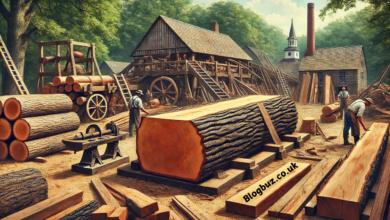Roofing Maintenance Tips for Commercial Property Owners

Introduction
The hum of HVAC systems, the steady pace of employees, and the occasional deliveries—all reflect the ongoing activity within commercial buildings. Amid this daily movement, one element silently protects everything beneath it: the roof. Despite its critical importance, commercial roofing is frequently one of the most overlooked aspects of property management.
Downtime in the business world translates directly into lost revenue. Yet, many of the disruptions caused by roofing issues are entirely preventable. Most problems don’t start with catastrophic failure but as minor, often invisible issues that worsen over time due to neglect.
Seasoned property owners understand that maintaining a roof isn’t just about avoiding leaks—it’s about ensuring operational continuity, saving on long-term repair costs, and preserving the building’s value. Pinnacle Roofing Group emphasizes that the health of a commercial roof directly affects the vitality of the business it shelters.
Understanding the Importance of Roof Maintenance
From Strategy to Structure
Roofing maintenance isn’t just a technical task—it’s a strategic responsibility. Imagine returning to work after a weekend storm only to find water stains, puddles, and employees shifting their workstations away from leaks. Such disruptions are not only costly but usually avoidable with seasonal roof inspections and preventive care.
No One-Size-Fits-All
Every commercial roof is unique. From TPO and EPDM to metal and modified bitumen, each roofing type has distinct properties and maintenance needs. While materials vary, the principles of care remain consistent: proactive inspections, debris management, and regular documentation.
Key Maintenance Practices
Know Your Roof
Awareness is the first step. Understand your roof’s age, construction type, drainage setup, and weather exposure. Surprisingly, many building owners are unaware of their roofing system details or the date of its last inspection—an oversight that can be expensive.
Conduct Regular Inspections
Visibility matters. While you may not personally inspect the roof, a professional should do so at least twice a year. These inspections should go beyond obvious damage like tears or pooling water. Experts can identify subtle issues such as:
- Separating seams
- Deteriorating flashing
- Weakened sealant around penetrations
- Blisters forming beneath membrane layers
Keep It Clean
It may seem simple, but debris removal is one of the most effective maintenance steps. Items like leaves, sticks, and trash can clog drains, leading to standing water. Just an inch of pooled water exerts significant pressure on roofing structures and encourages mold, algae, and eventual leaks.
Monitor the Roof’s Edges
Edges endure some of the harshest conditions—wind uplift, thermal expansion, and more. Perimeter flashing, coping caps, and membranes must be firmly secured and corrosion-free. Any deterioration in these areas opens pathways for moisture, which can cause extensive hidden damage.
Use Advanced Detection Tools
Not all damage is visible. Moisture scanning and thermal imaging technologies enable professionals to detect issues below the surface. These tools help determine whether minor repairs are sufficient or if a full replacement is needed.
Documentation and Planning
Maintain a Roofing File
A well-maintained roofing file is a powerful asset. Keep records of:
- Material warranties
- Seasonal inspection reports
- Photos and notes of repairs
- Major weather events
This documentation is useful for budgeting, making insurance claims, and even during property transactions.
Improve Tenant Satisfaction
In multi-tenant buildings, roofing issues can harm tenant relationships. Complaints about water damage or HVAC inconsistencies can affect retention. Consistent maintenance demonstrates commitment and builds tenant trust.
Energy Efficiency and Roofing
Roof maintenance also impacts energy performance. The insulation layer, reflectivity of the roofing surface, and layout of rooftop equipment influence internal climate control. In an era where energy efficiency equates to lower costs and greater appeal, neglecting roofing performance is a missed opportunity.
The Value of Professional Partnerships
Effective maintenance is built on reliable partnerships. Working with experienced commercial roofing professionals ensures not just thorough inspections but also informed recommendations and timely action. Pinnacle Roofing Group encourages businesses to make roofing a standard part of their operational planning—not a reactive measure.
Conclusion
Commercial roofing maintenance is more than preventing leaks—it’s about preserving your business infrastructure, minimizing downtime, and controlling expenses. The best advice? Don’t wait for signs of damage to appear. Schedule regular inspections, act on minor issues promptly, and keep detailed records.
Pinnacle Roofing Group urges property owners to see roof maintenance as a proactive investment. This shift in perspective—from reacting to preventing—can save thousands in repairs, preserve business continuity, and ensure that your operations remain uninterrupted under a secure, stable roof.




